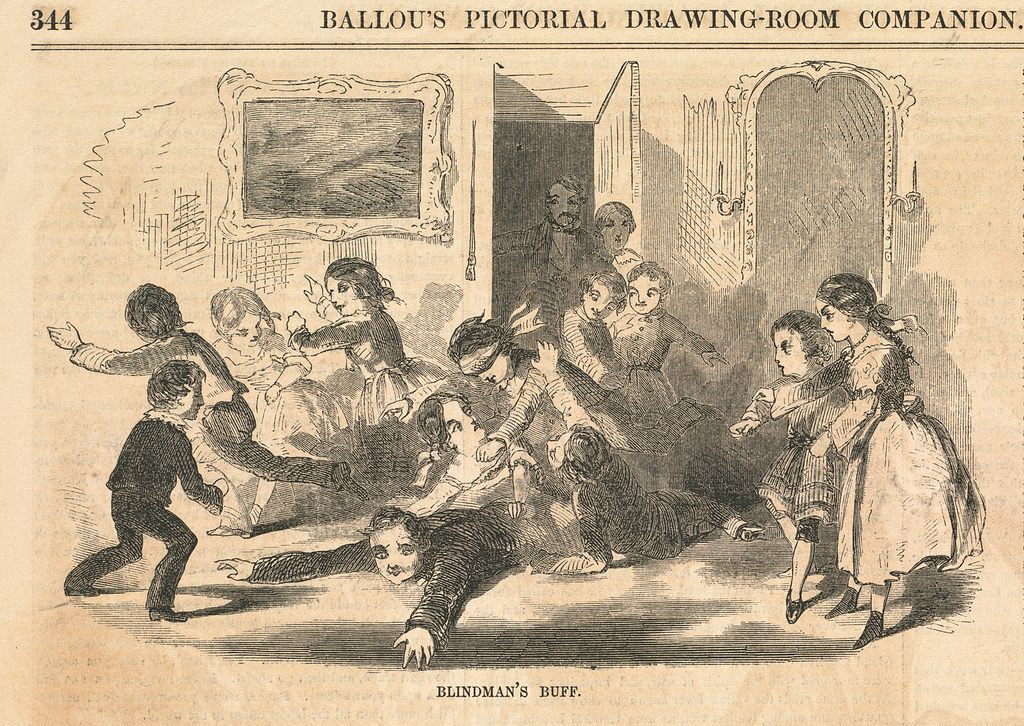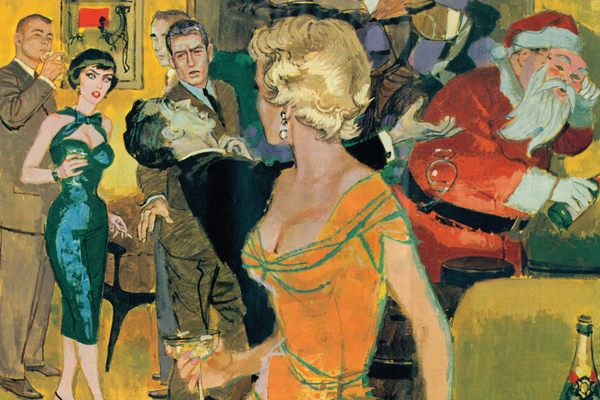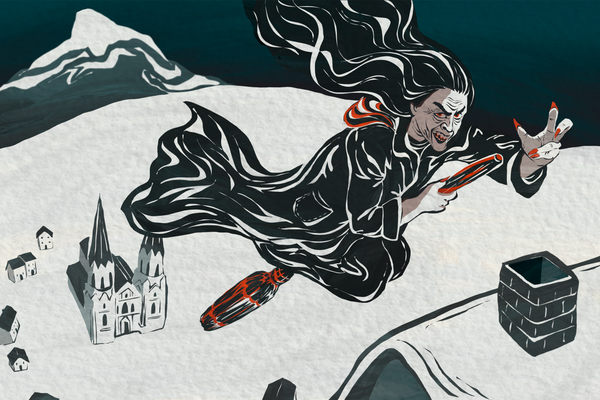Victorians’ Christmas Parlor Games Will Leave You Burned, Bruised, And Puking
Do not try them at home.
Most of the Christmas traditions we take for granted today are Victorian inventions: Christmas trees, Christmas stockings and Christmas carols didn’t exist much before the 1840s. Yet while these are somewhat diverting, the most exciting and outrageous Victorian traditions have been almost totally forgotten.
Indeed, in the early years of Queen Victoria’s rule, Christmas rivaled Spring Break for sheer bawdiness and self-destruction. Nowhere is this more evident than in the bonkers Victorian parlor game of Snapdragon.
Traditionally played on Christmas Eve, players of Snapdragon must find themselves a broad, shallow bowl, and then prepare to risk their health. Into this bowl should be poured two dozen raisins. If raisins are hard to come by, almonds, grapes or plums will suffice. You should then pour a bottle of brandy into the bowl so that the raisins bob up and down like drowning flies. Place the bowl on a sturdy table, turn the lights down low, and then, with appropriate panache, ignite the brandy.

To play Snapdragon, arrange your family and friends around the blazing bowl so that their faces are lit in a demonic fashion and then, one by one, take turns plunging your hands into the flames in order to try and grab a raisin. If you can accomplish this, promptly extinguish the flaming raisin by popping it into your mouth and eating it.
As one contemporary commenter wrote, the game “provided a considerable amount of laughter and merriment at the expense of the unsuccessful competitors.” So popular was it that it was even celebrated in poetry:
“With his blue and lapping tongue
Many of you will be stung,
Snip! Snap! Dragon!
For he snaps at all that comes
Snatching at his feast of plums
Snip ! Snap! Dragon!”
For the steadfast Victorian, nothing announced it was Christmas morning better than blistered hands, burned lips and a scorched palate. Snapdragon was so much fun that it even had a non-seasonal variant—Flapdragon—in which a lighted candle was placed in a mug of ale. Participants sought to drink from the mug without setting fire to their beards, mustaches or hair. Fire was to the Victorian era as Netflix is to our milksop age.

Snapdragon was not the only deranged Christmas pursuit on offer, for the Victorians were relentless innovators in painful drunken partying. Take Blind Man’s Buff, which is still played today albeit in a watered-down form. This variant of tag sees one blindfolded player attempting to tag the others.
But the Victorians played an altogether tougher version in which, according to a contemporary chronicler, “it is lawful to set anything in the way for Folks to tumble over, whether it be to break Arms, Legs or Heads, ‘tis no matter.” So painful and numerous were the injuries caused by playing Buff that it was rumored that the game had been invented by “Country Bone Setters” as a way of ensuring business.
Questions and Commands, a variant of today’s Truth or Dare, was also played on Christmas Eve. Failure to follow a command or answer a question led to either a monetary fine, or more often, getting your face completely blackened with soot from the fire. There was of course much drinking of strong ale flavored with nutmeg and sugar but this was often combined with the traditional and nameless Yuletide challenge of trying to spin around fifty times in a minute, which caused most participants to “reel home, or lie down in the Barn.”
If anyone still had energy the evening could end with a game of Hoop and Hide, a diversion similar to Hide and Seek, although it came with the caveat that if anyone was caught hiding in or near a bed “the dispute ends in Kissing.”

As festive games have softened so has Christmas literature. Rather than saccharine tales of Saint Nicholas creeping through the house, Christmas Eve used to be a time of ghost stories and tales of supernatural mischief. Charles Dickens’ A Christmas Carol remains the sole surviving example of what was once a burgeoning tradition of “winter tales” dating back to Elizabethan times (Shakespeare alluded to this tradition in his play, A Winter’s Tale, which is suffused with magic, madness and strange transformations.)
Throughout the 1970s the BBC steadfastly kept up the practice by broadcasting a ghost story in the late hours of Christmas Eve, and in the 2000s even had Christopher Lee sitting in front of a roaring fire reading the bone-chilling stories of M.R. James. Alas this practice has since come to an end, drowned beneath cloying animations and schmaltzy family entertainments.
So yes, the Christmas we celebrate today is Victorian in nature, but it is a far cry from the flaming, bruising, drunken, puking, terrifying festival of yore.






Follow us on Twitter to get the latest on the world's hidden wonders.
Like us on Facebook to get the latest on the world's hidden wonders.
Follow us on Twitter Like us on Facebook